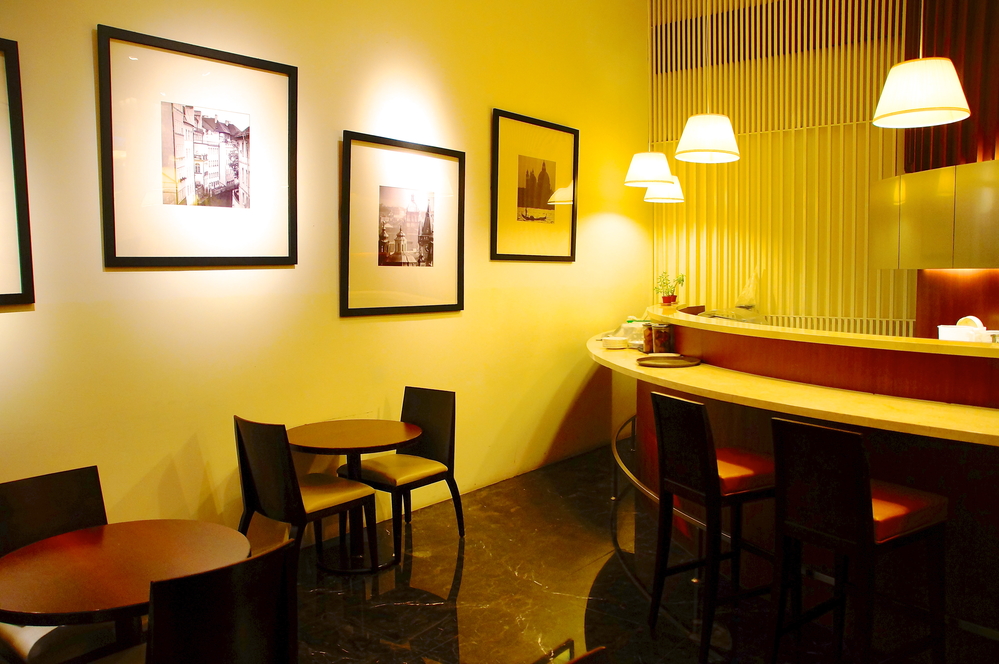Savor Authentic Oriental Cuisine With a Pan-Asian Twist for a Cooking Adventure
Beginning on a cooking trip through authentic Asian food, boosted with a Pan-Asian spin, supplies a special possibility to check out the abundant tapestry of tastes that define the region's diverse culinary traditions. This experience invites you to savor the elegant balance of tastes-- sweet, salted, spicy, and sour-- balanced by fragrant herbs and seasonings. Envision the ingenious combination of Thai curry and ramen or the unforeseen joy of sushi burritos. As you contemplate these attracting dishes, take into consideration the social stories and historic influences that form them, each bite offering a tale waiting to be uncovered.

Checking Out Pan-Asian Flavors
In the realm of global gastronomy, Pan-Asian cuisine sticks out for its amazing variety and the harmonious interaction of flavors from different Eastern societies. This culinary strategy commemorates the abundant customs and unique active ingredients located throughout the continent, developing a tapestry of tastes that is both rewarding and fascinating. Trick to Pan-Asian food is its capability to stabilize different flavors-- wonderful, salty, spicy, and sour-- while highlighting the freshness and top quality of each component.
From the umami-rich soy sauce of Japan to the fiery chili peppers of Thailand, Pan-Asian cuisine supplies an extensive palette of flavors. These components are typically combined in innovative means, enhancing meals with layers of complexity. As an example, using great smelling natural herbs such as lemongrass and cilantro, typical in Vietnamese and Thai food, adds a refreshing brightness to meals, while the unification of coconut milk supplies a luscious, rich texture.
The focus on fresh produce and fragrant spices guarantees that each dish is not only a feast for the taste yet likewise for the senses. Pan-Asian food welcomes diners to start a cooking trip, exploring the large and varied landscapes of Eastern gastronomy with every bite.
Fusion Meals to Try
While Pan-Asian food is celebrated for its typical tastes, the modern culinary landscape is increasingly welcoming blend dishes that blend these traditional aspects with influences from various other areas. This innovative method not just honors the abundant heritage of Asian cookeries yet additionally introduces unique preference experiences that interest modern tastes.
A prime example of such a blend meal is the Korean-Mexican taco, where marinated bulgogi beef is wrapped in a warm tortilla, topped with kimchi and a spicy gochujang-infused salsa. This mix weds the vibrant, full-flavored tastes of Korea with the vivid, fresh components of Mexican food. In a similar way, sushi burritos have acquired appeal, joining together the fragile virtuosity of Japanese sushi with the passionate, hand-held ease of a burrito, often featuring fusion ingredients like tempura shrimp and avocado with a drizzle of wasabi mayo.
One more noteworthy meal is Thai curry ramen, which infuses the creamy, aromatic seasonings of Thai curry into the comforting broth of standard Japanese ramen, developing an unified mix that entices the senses. These fusion recipes expand past plain uniqueness; they represent a cooking dialogue between societies, encouraging exploration and development on the planet of Pan-Asian cuisine.
Crucial Components and Seasonings
To really value Pan-Asian food, one have to comprehend the essential ingredients and seasonings that create its structure. This varied culinary style draws from an abundant tapestry of Oriental customs, employing an unified mix of textures and flavors.
Aromatic elements are essential, with lemongrass, garlic, and ginger being ubiquitous across numerous click here to find out more Pan-Asian recipes. These ingredients give a great smelling base that improves the intricacy of tastes. Flavors such as celebrity anise, cardamom, and cinnamon introduce warmth and personality, echoing impacts from regions like China and India.

Cooking Methods and Tips
Understanding the art of Pan-Asian cuisine calls for familiarity with its unique food preparation strategies, each adding to the vivid tapestry of tastes this culinary custom is celebrated for. Central to these approaches is the stir-fry, a fast cooking technique that maintains the nutritional integrity and vibrant shades of components. Making use of a frying try this site pan, the stir-fry technique enables even warmth circulation, necessary for achieving the characteristic structure and flavor balance of Pan-Asian recipes.
Another essential method is steaming, specifically prevalent in Chinese food. This gentle technique keeps the all-natural flavors and nutrients of ingredients, making it perfect for seafood and vegetables. Dumplings, a cherished staple, commonly profit from steaming, leading to soft, delicious appearances.
Grilling, also integral, imparts smoky depths to dishes such as Korean bulgogi or Japanese yakitori (Chinese food Islamabad). This method usually includes seasoning components, allowing tastes to pass through deeply prior to cooking over an open fire or warmer
Finally, grasping the art of balancing tastes-- sweet, sour, salted, bitter, and umami-- is crucial. Correctly layering these components can raise a dish from normal to amazing, using a complex and pleasing cooking experience that personifies the significance of Pan-Asian cuisine.
Eating Experiences Worldwide
Throughout the world, Pan-Asian cuisine offers an unequaled dining experience, commemorated for its rich tapestry of tastes and lively discussions. This cooking phenomenon has gone beyond cultural borders, recording the hearts and palates of food fanatics worldwide. In worldwide cities like New York, London, and Sydney, Pan-Asian restaurants work as fusions where culinary practices from Thailand, Japan, China, and past merge, offering restaurants with a diverse mix of recipes that highlight the area's variety.
The worldwide charm of Pan-Asian cuisine depends on its capability to offer both credibility and development. mr wong Chefs masterfully wed traditional ingredients such as lemongrass, soy sauce, and miso with contemporary techniques, resulting in recipes that are both refreshingly new and familiar. This blend permits diners to start a culinary journey that values heritage while welcoming modernity.
Additionally, eating experiences are raised via thoughtfully made atmospheres that reflect the ethos of Pan-Asian visual appeals. From minimalist Japanese-inspired insides to vibrant Thai-themed rooms, each restaurant provides an unique setting that matches the cooking offerings. Therefore, clients are not just consuming a dish yet partaking in a cultural experience, making Pan-Asian eating a really global phenomenon.
Conclusion
The expedition of Pan-Asian food supplies a profound understanding of the intricate interaction of flavors and culinary practices throughout Asia. By accepting blend dishes such as Thai curry ramen and sushi burritos, the cooking trip not only highlights the versatility of conventional ingredients however likewise showcases ingenious modern strategies. This gastronomic journey, improved by cooking methods and crucial seasonings, gives an unique chance to appreciate the social diversity and culinary virtuosity that specify Pan-Asian cuisine on a worldwide scale.
Embarking on a cooking trip with authentic Eastern cuisine, improved with a Pan-Asian twist, offers an unique possibility to check out the abundant tapestry of flavors that specify the area's diverse cooking practices.In the world of international gastronomy, Pan-Asian cuisine stands out for its impressive diversity and the harmonious interaction of tastes from numerous Asian societies. Trick to Pan-Asian food is its capability to stabilize contrasting flavors-- pleasant, salty, spicy, and sour-- while highlighting the freshness and high quality of each component.
